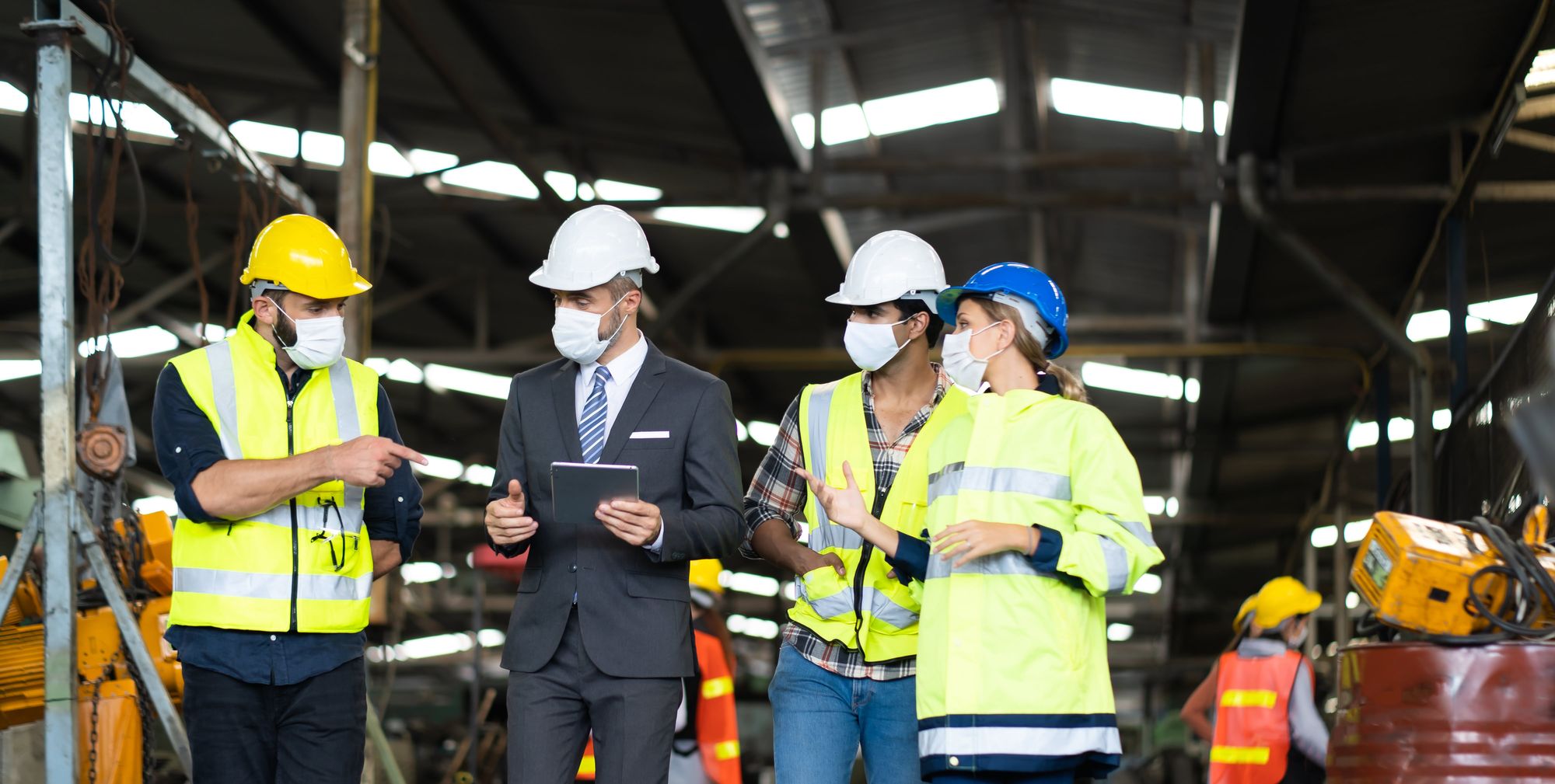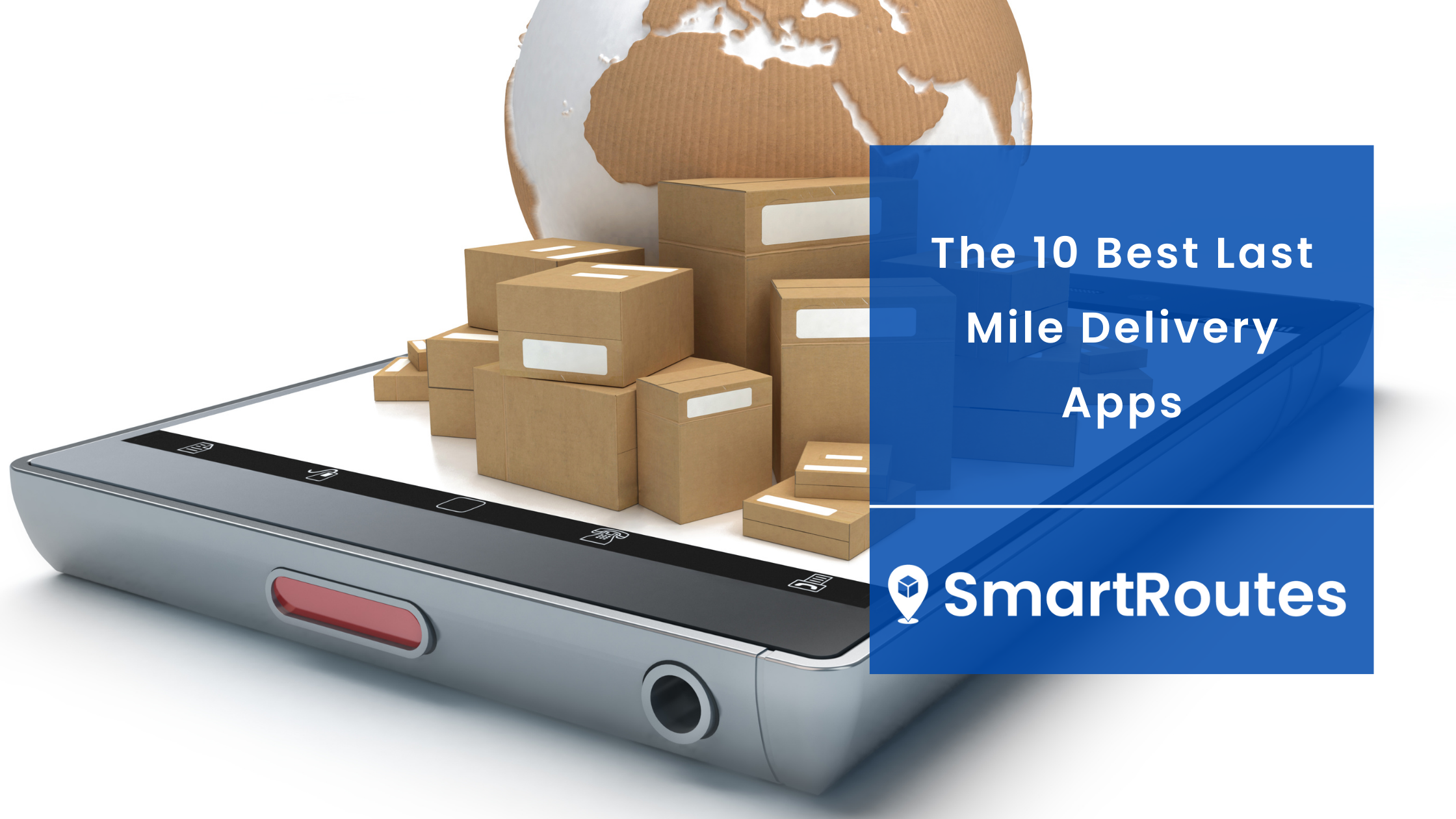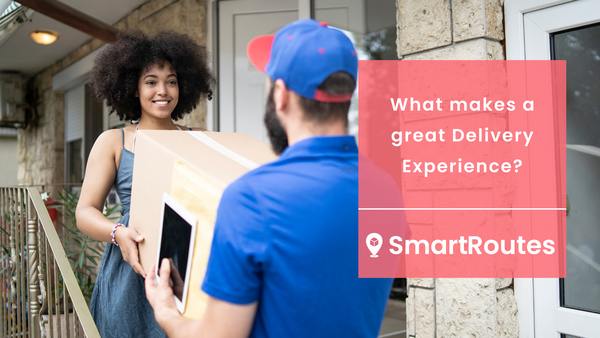Automation is Transforming the Last Mile. Here’s How.
In this article we look past the 'hype' around automation and identify its uses in the last mile.
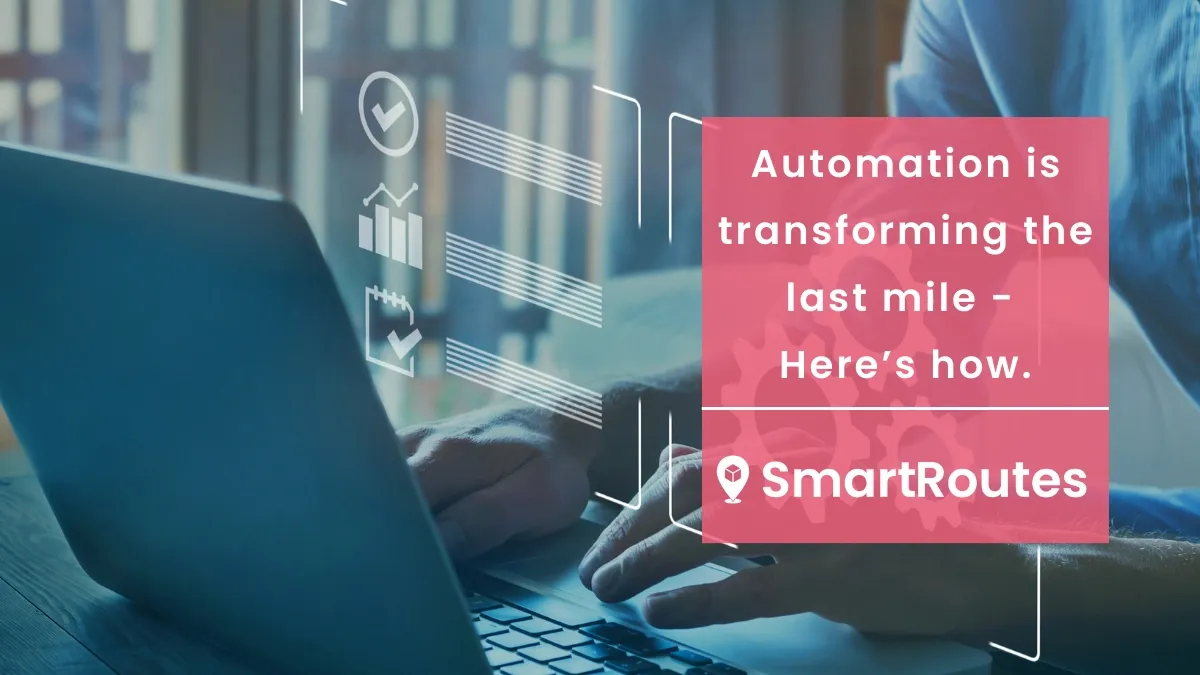
There’s been a lot of noise around automation in recent years. So much, in fact, there might be a temptation to dismiss it out-of-hand as a bit of a tech buzzword.
In reality, we’ve been automating processes for far longer than we often realize.
That out-of-office email you set when you head out? Automation. The simple act of putting in an address to Google Maps and having it spit out the quickest route? Gone are the days of having to look at a map and figure out the route yourself. Google automates it for you.
The last mile might just be the greatest use case for automation that there is, so let’s take a closer look at how it works. In this blog, we’ll talk about what exactly automation means to the last mile of the supply chain, some processes that can be easily automated, and the technology available to do it. So whether you’re a warehouse manager, logistics manager, route planner, or driver, this should be of value to you.
Autonomous Delivery is about to become mainstream, so let’s put you ahead of the pack!
What is Last Mile Automation?
Last mile automation is the elimination of manual human input into the operational processes involved in the last stage of the supply chain. By automating repetitive tasks like route planning and adding customer details with orders, much of the guesswork and human error is removed from the process. This results in far more efficient and cost-effective operations, critical to the parcel delivery industry where high-density drops per vehicle with lower volume per parcel is the norm.
To understand how automation in the last mile works, it is important to note that there are three different stages of focus:
- Pre-Delivery
- Delivery
- Post Delivery
Each of these 3 stages has processes that are ripe for automation. However, rather than being taken in isolation, each one benefits the other. We will explain this in a bit more detail below, but first, consider this:
Last mile delivery automation saves logistics planners and admin staff hours and removes human errors like misentered addresses or postcodes. This has a knock-on effect of reducing missed deliveries.
This results in fewer queries from dissatisfied customers looking for their parcel, but further automation of the process using pre-delivery notifications with the ETD (Estimated Time of Delivery) based on the timestamps on the planned route further reduces the number of customer queries to be dealt with.
As you can see from this small part of the last mile supply chain, there are real savings to be made.
SmartRoutes Route Planning Software
Streamline your entire delivery process, all from one platform

How does automation transform the last mile?
There has been a big increase in the number of technologies designed specifically for automating last mile logistics over recent years. Whether you're a retailer or third-party logistics business, last mile automation has the potential to transform your current operations and make scaling your business much simpler and cost-effective.
At SmartRoutes, we’ve been at the forefront of pioneering such technologies, and we believe the following to be the most valuable automations:
Automated Route Planning & Route Dispatch
Automated Customer Notifications
Automated Proof-of-Delivery & Invoicing
Order Fulfillment Automation
For retailers, getting orders is the name of the game.
But it can also be the most intensive part of operating a retail business as delivery products can require picking, packing, labeling, and allocation to a delivery route and vehicle. At the very high end of the scale, eCommerce giants from Amazon have built their entire business models around highly efficient processes that utilize automated robot pickers that can identify objects and parcels.
But you don’t need to be at Amazon's level to benefit from automation in your warehouse or storeroom.
Technology solutions like WooCommerce and Shopify allow simple automations like label printing for parcels, purchase confirmations by email, and post-delivery customer care in a pretty easy manner. All of this can save time processing parcels, creating shipping labels and communicating with the customer, all of which is all a help to businesses looking to save on time.
Automated Route Planning & Route Dispatch
This one is central to the work we do at SmartRoutes, and in our opinion, it is the biggest advance in last mile capabilities over the past decade.
The way it works is simple:
You receive the order on your online booking platform for eCommerce website, and the route optimization software pulls in the customers name, address, order details and adds it to the list of deliveries to be added to the delivery routes. Once a predetermined time arrives, it goes about automating the creation of routes based on driver and vehicle availability, and once done, automates the sending of the routes to their assigned drivers.
No human input, no human error.
This can mean saving countless hours manually planning routers and communicating with drivers.
And that’s before you even consider that route optimization reduces the distance traveled by delivery vehicles by up to 33%!
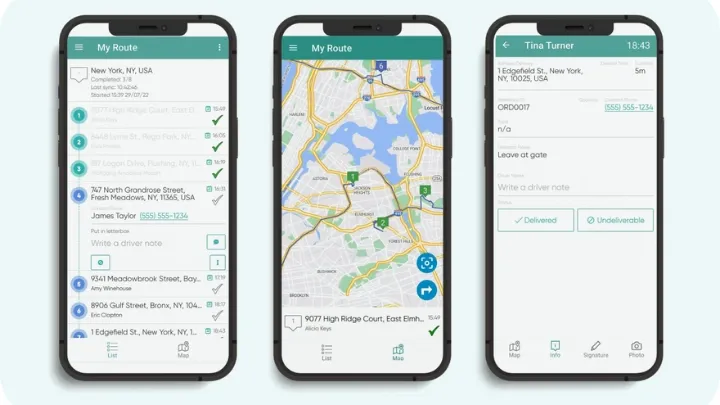
Automated Customer Notifications
One of the biggest drains in a company's resources is customer communications.
The reality is, that your customers are the backbone of your business and they need to be treated that way. The problem is that dealing with customers can be very time-consuming and monotonous work.
While customer support agents or office clerks may be essential to your business, the likelihood is that much of the work they do can be automated. With last mile delivery technology, customers can be notified about the expected delivery time and any other specifics to be aware of. From the point of receiving an order from the customer, the software adds it to a list of deliveries for automated routing and dispatch to the driver, and once done, sends an email or SMS with the details of the delivery.
In doing so, it gives the customer better oversight of their delivery and they can even track their delivery in real-time using a personal link for the live-tracking portal.
All of this enhances the delivery experience, but also reduces unnecessary customer queries, allowing your support staff to focus on more proactive business tasks like after-sales check-ins.
Automated Proof-of-Delivery & Invoicing
Proof-of-Delivery
While you might assume that automation in the last mile ends with the delivery of a parcel, there is more added value to the technology in the post-delivery stage too.
With sign-on-glass and photo proof of delivery capabilities on delivery drivers mobile apps, they can ensure that there is irrefutable evidence of successful delivery. In terms of company PR, this can be the solution to one of the biggest last mile problems.
Neighbour signed for the parcel?
There’s a signature captured.
The Driver left the parcel in a secure shed adjoining the property and the customer can’t find it?
There’s a photo of the parcel in situ to enable the customer support agent to help locate it.
Again, it is in the automation that POD’s become invaluable to a delivery operation. When a driver captures a photo of a signature on the doorstep, it is instantly recorded on the order details on a centralized delivery management system that depot or warehouse staff can access. This ensures that all they have to do when a customer makes a query, is key in the customer's name or address, and they can instantly see the delivery status complete with a POD or signature if it has been recorded. Based on our research at SmartRoutes, this particular automation has the effect of reducing the time spent serving customer queries by 75% in last mile logistics businesses.
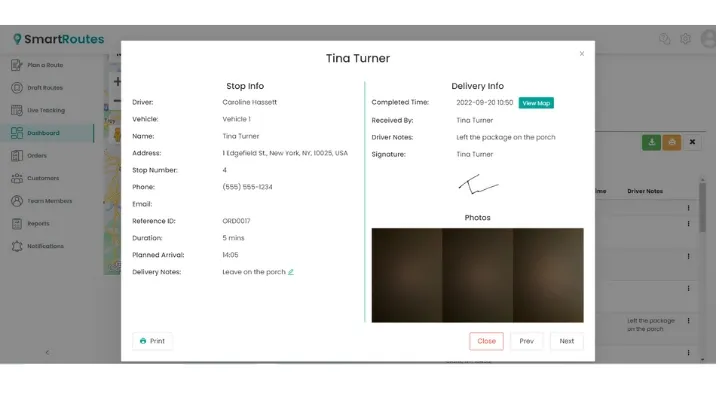
Invoicing
The key to automation is that any industry is examining the processes and journeys in their entirety to identify tasks that are ripe for the use of the technology.
The final step in the supply chain is getting paid for the work that you’ve done. And to get paid, it pays to be punctual and professional with your clients.
At SmartRoutes, we recognized this and developed a solution that calculates billing based on your own parameters (set pricing, mileage, parcel volume, delivery zone, etc.) or based on data fed into our system via custom integration or API from your eCommerce or Warehouse Management System.
On this basis, we help to automate the dispatch of invoices to customers by email once the delivery has been marked as completed. Again, this is a huge time saver, eliminating another monotonous task that can equate to the salary of a full-time employee.
How SmartRoutes helped Transvalair to automate their delivery process
When Transvalair approached us, they had already concluded that most of the delivery operations could be automated.
They just needed a solution that could do it reliably. With high-volume multi-stop routes, they knew that the savings they could achieve would be transformational for their business. After a period of consultation on their processes, we helped to custom-develop a system that integrated seamlessly with their existing technologies and quickly had them automate everything from the route planning and territory management while giving them infinitely more oversight over their operations too.
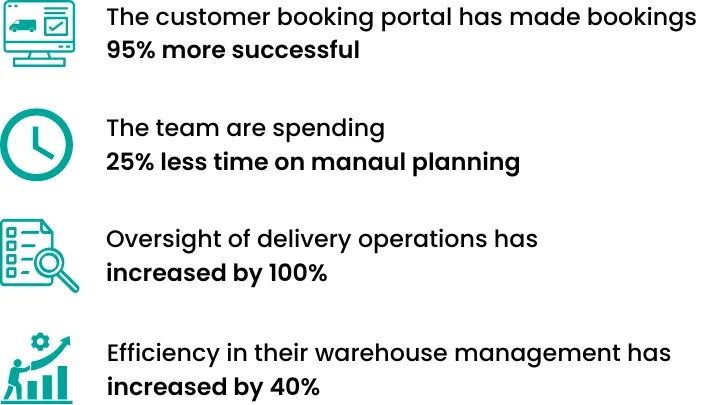
Regardless of how inefficient your current operations can be, it can be easy to put automation on the long finger. The thoughts of implementing last mile automation software in your business can seem like an extra task.
In reality, though, the process is entirely seamless and with the support of a hands-on software provider like SmartRoutes, it can be rolled out to drivers in a single day with little to no impact on drivers, warehouse/depot staff or management. Furthermore, it’s possible to see real and quantifiable savings from the first month of implementation.
We are now in a period of digital transformation that will afford the biggest opportunity to those that embrace technology, and themselves the best opportunity to scale business with ease.
There is no match for the reliability of 21st-century technology when it comes to handling previously laborious manual labor tasks in the last mile.
Start using automation in your last mile delivery process today!
If you’re keen on saving your delivery business time and money with automated processes, you can get in touch to set up a free trial of SmartRoutes to see how automated last mile delivery software can work for you.
Frequently asked questions
1. What are some examples of automation technologies used in last-mile delivery?
- Route Planners: Advanced route planning software optimizes delivery routes in real-time, considering various factors like traffic, weather, and delivery windows.
- Automated Notifications and Geofenced Notification: Automated notifications keep customers informed about the status of their deliveries, including estimated delivery times. Geofenced notifications trigger alerts when a delivery is in close proximity, enhancing convenience.
- Order Fulfillment Automation: Integration with route planners enables the direct extraction of order information for seamless routing. This streamlines order processing, reducing errors and delays.
- Automated Dispatch and Assignment of Routes: Automation systems handle the dispatch and assignment of delivery routes, reducing the need for manual intervention and ensuring efficient deployment of resources.
- Auto Access to Live PODs (Proof of Delivery): Access to live Proof of Delivery data provides real-time visibility into delivery progress, improving transparency and accountability.
2. What are the benefits of adopting automation in last-mile logistics?
- Higher Successful Delivery Rates: Automated notifications keep customers informed and engaged, reducing missed deliveries and enhancing customer satisfaction.
- Time Savings: Automation reduces the time spent on manual route planning and administrative tasks, allowing your team to focus on more critical aspects of the business.
- Operational Oversight: Automation provides real-time visibility into operations, enabling businesses to monitor and optimize their delivery processes for greater efficiency.
- Cost Savings: Improved efficiency and reduced manual intervention lead to cost savings, making last-mile operations more economical and sustainable.
3. How can businesses of different sizes implement automation in their last-mile operations?
Implementing automation in last-mile operations is not limited by business size, thanks to flexible solutions and pricing structures. Automation platforms are often available on a subscription basis, allowing businesses to pay according to their current needs and scale as they expand. This flexibility means you don't have to commit to a full platform upfront. Entry-level pricing options are designed to accommodate budgets of all sizes, making automation accessible for businesses with varying financial resources. Businesses don't need to automate every aspect of their operations. Start by evaluating your current systems and identifying the most time-consuming and resource-intensive tasks. Focus on automating these areas to realize immediate efficiency gains and free up your team for more strategic responsibilities.
Enjoyed this blog? You can read similar articles below -
